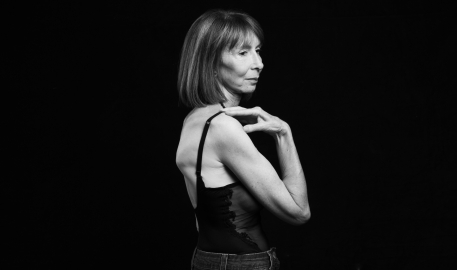Monday – Friday 9am to 5pm
Adult Degenerative scoliosis
Adult degenerative scoliosis is divided into two categories.
Degenerative scoliosis happens to an adult who has had a history of scoliosis. The spine starts to show wear and tear due to age. This wear and tear can cause the spine to collapse, causing the curve to increase.
De novo (new) scoliosis first appears in adulthood, due to wear and tear. Again, in this case, this can result in a curve of the spine. In both cases adult degenerative scoliosis is typically diagnosed after an adult reaches the age of 50.
Over time in adult degenerative scoliosis the facet joints and discs can degenerate. The pressure created by this degeneration can cause the spine to curve.
Cause
Over time in adult degenerative scoliosis the facet joints and discs can degenerate. The pressure created by this degeneration can cause the spine to curve. The facet joints are small joints between each of the vertebrae in your spine. Joints are the places in the body where two bones meet. The facet joints are the joints in your spine that make your back flexible. They
also enable you to bend and twist. Discs are a part of the spine. They are round and flat on the top and bottom and are slightly flexible. They stop your vertebrae from rubbing against one another. They also work like shock absorbers for the spine. Injury to, or degeneration of discs can lead to lower back pain and leg pain and can also cause numbness and weakness. Because the facet joints and discs are affected adults
can experience back pain, weakness in legs and/or feet and a loss of flexibility.
Diagnosis
The specialist will take a full history, talk to you about any pain and discomfort you are experiencing. They will want to examine your back to see if there is a visable curve or if one shoulder is higher than the other. Investigations may include one or more of the following:
• A standing X-ray which will show the curve of the spine
- A CT scan (computed tomography scan) which produces detailed images of many structures inside the body, including the internal organs, blood vessels and bones
- An MRI scan (Magnetic resonance imaging) which uses strong magnetic fields and radio waves to produce more detailed pictures of the spine. This helps check that there are no problems with the spinal cord and the development of the nerves.
Treatment
Non-surgical interventions
Most patients with adult degenerative scoliosis are given non-surgical treatment. These treatments may include anti-inflammatory drugs for pain relief, physiotherapy for improving overall mobility, and low impact exercises to improve strength. If the medications and therapy do not work, steroid or local
anaesthetic injections in the muscle, joints, or spinal canal may help with pain.
Surgical intervention
If these treatments do not work, a scoliosis specialist may talk to the patient about the risks and benefits of surgery. The aim of surgery is to relieve pain and correct the changes in posture or balance that occur. Surgery for adults is more challenging than for young people as adults may have other health concerns. Recovery can also take longer.
Prognosis (outcome)
The pain created by a spinal curve can be treated in lots of different ways. It is always worth going to see a scoliosis specialist who can advise you on a case by case basis.
Without surgery, often curves that are 50 degrees or more in size after a person is fully grown may increase by an average of 1 degree per year. Curves of less than 30 degrees rarely get bigger.
Frequently asked questions
Here is a selection of common questions we are asked by callers on our Helpline. If there is other information needed or for further advice please do not hesitate to call us on: 020 8964 1166 or e-mail: info@sauk.org.uk
Degenerative scoliosis occurs in adults for two main reasons. First, scoliosis may have started when the patient was younger and may have worsened with age. The second degenerative, or de novo, type of scoliosis starts after the age of 40 and is thought to be caused when discs and facet joints (the hinge joints at the back of the spine) start to collapse in the lumbar spine (lower part of the spine). When discs and facet joints collapse the vertebrae can slip out of place, which makes the spine curve.
After diagnosis you should make sure that you are seen by a scoliosis specialist. There are around 30 scoliosis centres across the UK and you can find your nearest specialist by calling or emailing . You will need to take the names of the specialists to your GP, who will organise a referral. You will then receive a letter in the post with your appointment date and time.
At your first appointment with the specialist you will be examined, X-rays will be taken, and you will be told the Cobb angle. The Cobb angle is measured in degrees, and will tell you how big the curve is. The specialist will then talk to you about your scoliosis and possible treatments. It is important to remember that every scoliosis is different and there is no standard treatment so consulting a specialist is essential.
In Scotland things are done in a slightly different way. After diagnosis, you will be referred to an orthopaedic surgeon, who will assess you and organise the referral to the national service if necessary. Please see the Scottish web page on the for more information.
Degenerative scoliosis is a curve that worsens as the years go by. Some patients with progressive scoliosis may have pain, breathing difficulties, or problems with mobility.
Adults under age 30 years are usually treated in much the same way as adolescents, although their curvatures are often a little stiffer than in a younger person. This stiffness can mean that surgery is more complicated.
Surgery can still be an option for some adults over 40. However, an operation would usually be done to treat pain rather than correct the curve. Surgery can be more complicated for an older person and it is less easy to predict the outcome. The scoliosis specialist would discuss all risks and benefits with the patient if surgery was an option.
Scoliosis can only be prevented when it is due to rickets or poliomyelitis, which can both be treated. Happily both these diseases are now very rare.
Scoliosis is not caused by bad posture, carrying a heavy backpack, or anything you did or did not do.
If you take the names of your nearest scoliosis specialists to the GP, they will usually be happy to arrange the referral. However, sometimes they will not want to. It is important to ask why this is. There may be a good reason why the referral can’t be made. This could be a reason to do with the hospital, or your area may have a different process for making such referrals.
If there is no clear reason, we suggest making an appointment with another GP at the practice. If this is not successful, you can write to the Practice Manager and ask them to look into the matter.
In Scotland things are done slightly different. After diagnosis, you will be referred to an orthopaedic surgeon, who will assess you and organise the referral to the national service if necessary. Please see the web page on the
It is normal to feel confused about what course of treatment to choose. There is a lot of information to take in and some of the questions about scoliosis have no clear answer. It is absolutely fine to ask your specialist further questions, or for a second opinion.
If you need names of other centres or specialists then you can get this information from us by calling or emailing us.
. You may also find that it helps to talk through the specialist’s advice with someone. The friendly SAUK team are always happy to offer advice, support, and a listening ear. You can ask us as many questions as you like and we will try to help. It sometimes helps to speak to people who have been in a similar position. If you would like to speak to people affected by scoliosis, the
Treatment has developed a lot over the last 5 to 10 years. There are more options for older people now, and assessment by a scoliosis specialist will give you more information about your curvature and the future. However, surgery for older people does carry higher risks than for young people. Our bones weaken as we age and this makes surgery much more challenging.
In adults over the age of 40 recovery happens more slowly than for younger people. As their spines are older and the bones weaker it can be harder to predict what the results of surgery will be. Any surgery is usually done to relieve pain rather than to correct the curve. However, the surgery may lessen the curve too. A scoliosis specialist will talk to the patient about the risks and benefits.
Pain management is a difficult subject because everyone has different experiences. What works for one person does not always work for the next.
If possible, most people should do light exercise. Swimming, yoga, and Pilates can help with pain as they make the core (stomach and back) muscles stronger. This is good for back health in general.
Over the-counter painkillers such as paracetamol and ibuprofen can help some people. If these drugs don’t work, then talk to your GP, who can refer you to a pain management clinic in your area. Pain management clinics are able to look at a wider range of treatments these can include medication and pain management courses and programmes that teach techniques to manage long-term pain.
For more information on pain management please click here.
It is your right to ask for a second opinion from another specialist at the same or a different hospital.
Also every hospital has a patient advice and liaison service (PALS). If you are unhappy with the way that you have been treated or have any other worry or concern about your care, you can seek advice from the PALS service linked to your hospital, which will be happy to help.
For patients in Scotland you can contact the Patient Advice and Support Service http://www.patientadvicescotland.org.uk/
Patients in Northern Ireland can contact http://www.patientclientcouncil.hscni.net/
If you would like to talk further about any aspect of scoliosis, SAUK is here to help; please call our helpline or contact us via post or using our e-mail address info@sauk.org.uk.

- Non-surgical management of Adult Degenerative Scoliosis
- Coping with pain
- Surgery for Degenerative Scoliosis
- Coping with the ageing spine
- Personal Accounts - Caroline
- Making adult spinal surgery safer: strategies and limitations
- Children’s Spinal Deformity in Adulthood
- Paediatric Spinal Deformity in Adults Q&A video with spinal surgeon
© 2024 Scoliosis Support & Research | Scoliosis Support & Research is a registered charity no. 1181463
Website design & development by Pedalo
